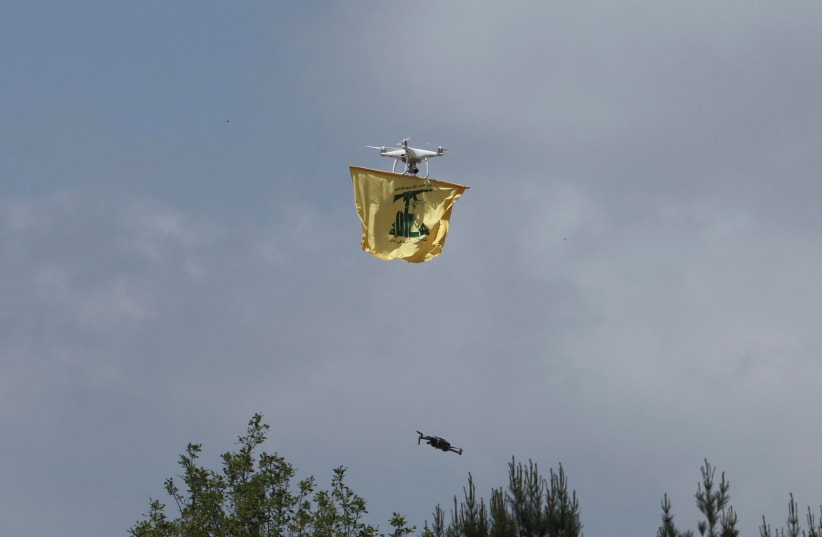More and more drones are getting through Israeli defense systems. On Saturday, Hezbollah launched an unmanned aerial vehicle attack on Israel, one of which targeted the home of Prime Minister Benjamin Netanyahu in Caesarea. This strike comes in the wake of a deadly drone assault a week ago that killed four Golani soldiers and wounded sixty at an IDF base near Binyamina.
These follow another deadly UAV attack in the Golan, carried out by Iraqi militias. The drones appear to have become more effective, deadly and precise, and there may be various reasons for this.
According to Ynet, “Hezbollah’s latest tactic involves combining heavy rocket barrages with drone strikes to overwhelm Israeli air defenses, aiming to cause confusion and increase damage from interception debris, with casualties from drones steadily rising.”
That might not be the only reason. Israel’s enemies possess a plethora of UAVs of varying types, including the ones that have been filmed and photographed in recent attacks. The videos of Saturday’s strike showed a relatively normal type of attack drone that has a wing, fuselage and a V-shaped tail. The Houthis used a similar one to hit Tel Aviv in July, resulting in one fatality. A strike on Yom Kippur that targeted Herzliya appeared to use a similar drone.
There are other types of kamikaze drones in the arsenal of Hezbollah, the Houthis, and Iraqi militias. These include the delta-shaped Shahed 136, which is a popular export model for the Iranians. The Russians employ thousands of these UAVs against Ukraine. Hezbollah itself is estimated to have up to 2,000 drones. It has used hundreds of them, but it still possesses a large number and is likely importing or constructing more.


Hezbollah’s UAV attacks are becoming more sophisticated and calibrated. In the first year of the war, it mostly focused on targets near the border, including Iron Dome batteries and IDF bases. It used drones against a surveillance balloon near Golani junction, in addition to hitting soldiers in a field near Hurfeish and in the community of Arab el-Aramsha. The Lebanese-based terrorist group has honed its capabilities in these shorter-range attacks. Before October 7, Hezbollah had also targeted an Israeli gas platform off the coast in 2022.
Terror groups possessing long-range UAVs
Hezbollah, the Houthis, and the Iraqi militias now possess long-range UAVs that can exceed 2,000 km. in some cases. Hezbollah doesn’t require such a long range to hit anywhere in Israel, but the Houthis and Iraqis do. However, as Hezbollah faces strikes in Beirut, the Bekaa Valley, and south of the Litani River, it may need to launch its drones from more secretive sites in northern Lebanon. The types of UAVs being used are not that large though: usually several meters long with a wingspan of several meters.
The photos and videos of the drone used in Saturday’s attack have led people on social media to believe it was a Shahed 101. According to the Alma Research and Education Center, the Shahed 101 drone has a warhead of 8 kg., a range of 900 km. and a speed of 120 kph.
“Starting in July 2024, Hezbollah began launching Shahed 101-type suicide UAVs with electric motors towards Israel. Hezbollah is using these UAVs in recent months due to the advantages they offer, as we have previously reported,” the Alma Center notes.
The apparent success that the terrorist group is having with drone attacks recently comes after a year in which the group continued to use these new systems. It has had repeated success throughout the year, due to the UAVs’ simple maneuverability and the difficulty of detecting them. Hezbollah will continue to use these systems to try to carry out what it sees as “quality” strikes, increasingly escalating against Israel.
